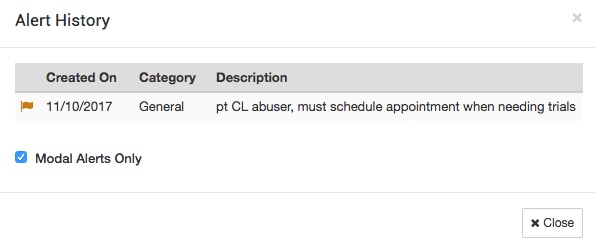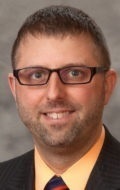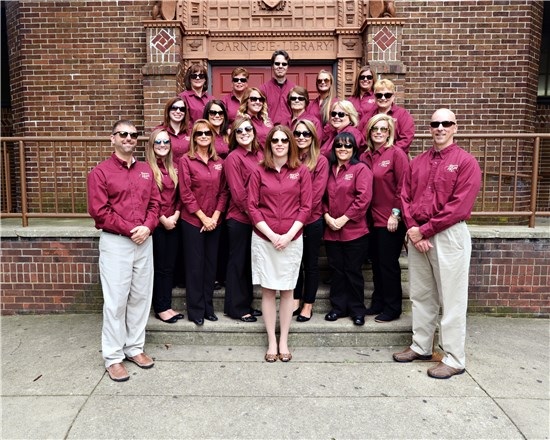By Dave Anderson, OD

Jan. 3, 2018
A practice that doesn’t require your physical presence to profitably operate is an advantage in giving you greater options in how to spend your time. It also creates flexibility in providing care for patients. Here are the investments and processes that have enabled me to create a practice that isn’t dependent on me, or my two partners.
Optimize EHR
Make the most of your EHR’s ability to schedule visits and communicate with doctors and staff while you are out of the office. Our EHR allows us to do both, and we communicate with our staff while we are gone about potential emergencies, routine business, and everything in between. Sometimes our staff needs to speak with us, sometimes it’s clear that the issue can wait until we arrive home, and sometimes it’s something that is handled by scheduling the patient for a future appointment.
The great thing about our in-the-cloud EHR is that we can access it remotely, and quickly get the information we need from staff to assess the situation, and determine what is needed to best serve that patient or the practice. If we need to send an urgent prescription, or answer a question for a patient, we are notified that we need to log into the EHR and solve the problem from wherever we are.
Strategize Potential Challenges & Develop Protocols
We made a concerted effort to develop a strategy for many different scenarios that could occur while we’re away, and how those should be managed by our staff. This includes how a medication refill is handled, how emergencies are managed and answering patient questions.
Our staff works hard to manage the requests as best as they can, and often they can have a more senior staff member, or a staff member trained in a specific area, answer the patient’s question.
An example would be contact lens trouble-shooting. Our staff is instructed to ask a few basic questions prior to sending the person to my voicemail or scheduling them. They always ask if the problem is urgent, if it is related to a painful or red eye, or is simply a frustrating vision issue. If it is vision, or mild discomfort, they are directed to our senior contact lens technician, who often can solve the problem.
We go over these scenarios often, that way our staff constantly hears about common issues, and how they can solve them without asking the doctor for help. This is hard when the question is not clear, but we teach our staff to ask both direct and probing questions, to get to the heart of the issue. An example of this might be when a patient calls with a concern about changing vision. Our staff is always ready with a few questions to determine what is needed next:
1. Is this a sudden change or gradual?
2. Is this something that needs to be seen today?
3. Is there a specific reason you are calling today related to this concern?
These questions often answer the “what next?” question for our staff. If it is sudden, needs to be seen today, and the patient is calling because they are worried about being blind, we find a way to immediately help the patient. If the issue is gradual, not urgent, and they called because they realized there is a break in their schedule coming up, we can be sure to schedule the patient accordingly without interrupting the doctor.
When a staff member does need to come to me for help, I discuss the question with the whole staff, so everyone better understands the reason I handled the issue in the way I did. For example, if I choose to have a patient wait for an appointment versus seeing them immediately, I explain why, and what I was thinking when I made that decision.
I always ask my staff when they approach me with a “how should we handle this” type of question, “What would you want in this situation?” This exercise allows my staff to take a step back and put themselves in the shoes of the patient, and allows them to think like a business owner, and not an employee.

An example of the kind of note that Dr. Anderson often leaves in the practice’s EHR, so staff know without him there what each patient needs. He says detailed notes are a key to effective delegation.
Provide Information to Facilitate Purchases & Scheduling
Whether I am in the office or not, we are able to help patients purchase contacts or glasses as long as their prescriptions are current.
First, we send the message with our prominent optical, as well as medical facilities, that our office is both retail- and medically based. So, patients understand that, like any store, the owner doesn’t have to be there to make a purchase. Our staff is excited for the opportunity to help a patient with the purchasing of glasses while there is no doctor in the office.
During the exam, we make careful notes to ensure patients are prescribed the best eyewear options, and these notes are utilized by opticians during the glasses ordering process. For example, we ensure our recommendations for a specific lens material based on the patient’s prescription, or a specific lens design based on their vision needs, is indicated in multiple areas of the chart, as well as the problem the lens option is designed to solve. For instance, a patient may have night-glare issues, or discussed their desire for a photochromatic lens for golfing. We mark carefully in the chart that they may need AR or Transitions, and also include the reason why.
The answer to a staff question is almost always within the chart. Having the information in the patient’s chart allows so many questions to be answered without any consult with the doctor. Examples of the kinds of doctor notes that are helpful in guiding staff:
“When this patients schedules, they will need extra time for mobility issues and a sign language interpreter to be present.”
“This patient over-wears contacts. They are not to be given trials without scheduling an exam.”
“This is the specific type, and brand, of artificial tear the patient was given a sample of, so that’s the type they should get at the store.”
 Dave Anderson, OD, is a partner with Miamisburg Vision Care in Miamisburg, Ohio. To contact: doca@burgvision.com
Dave Anderson, OD, is a partner with Miamisburg Vision Care in Miamisburg, Ohio. To contact: doca@burgvision.com




























